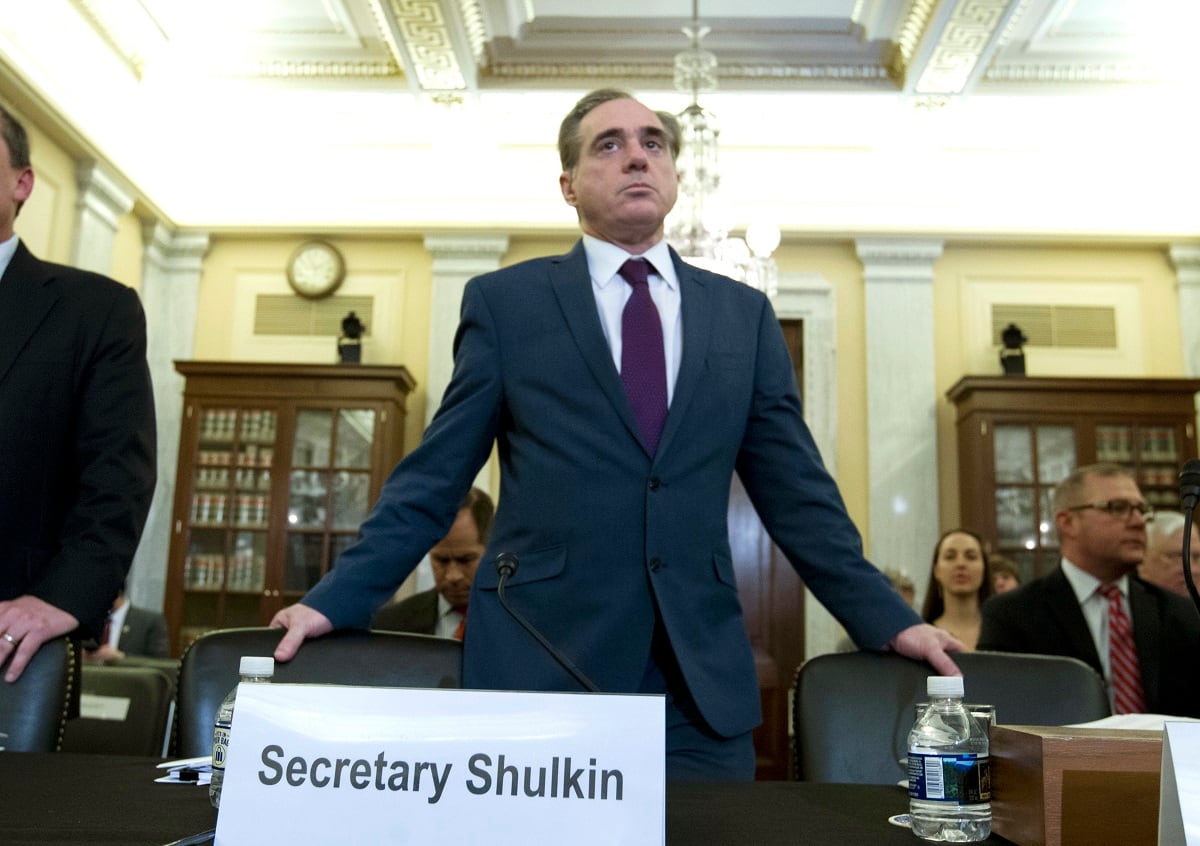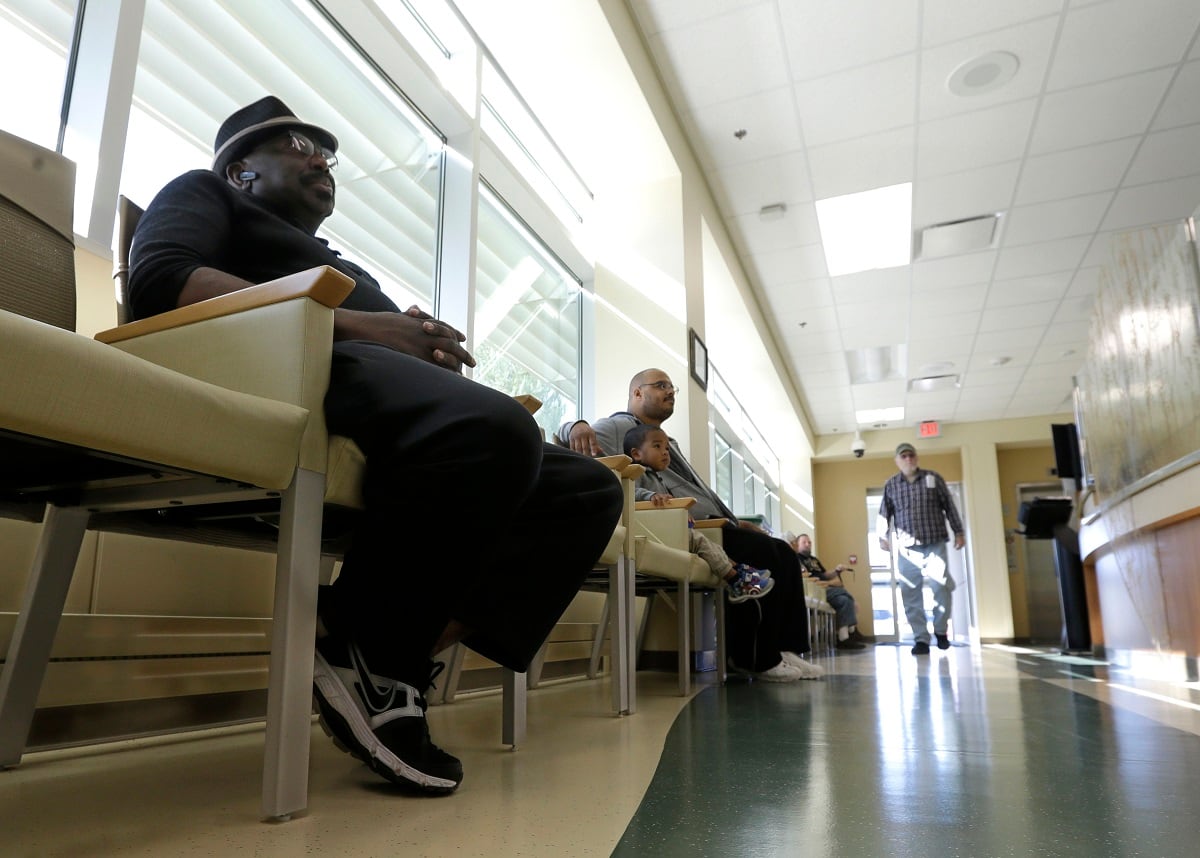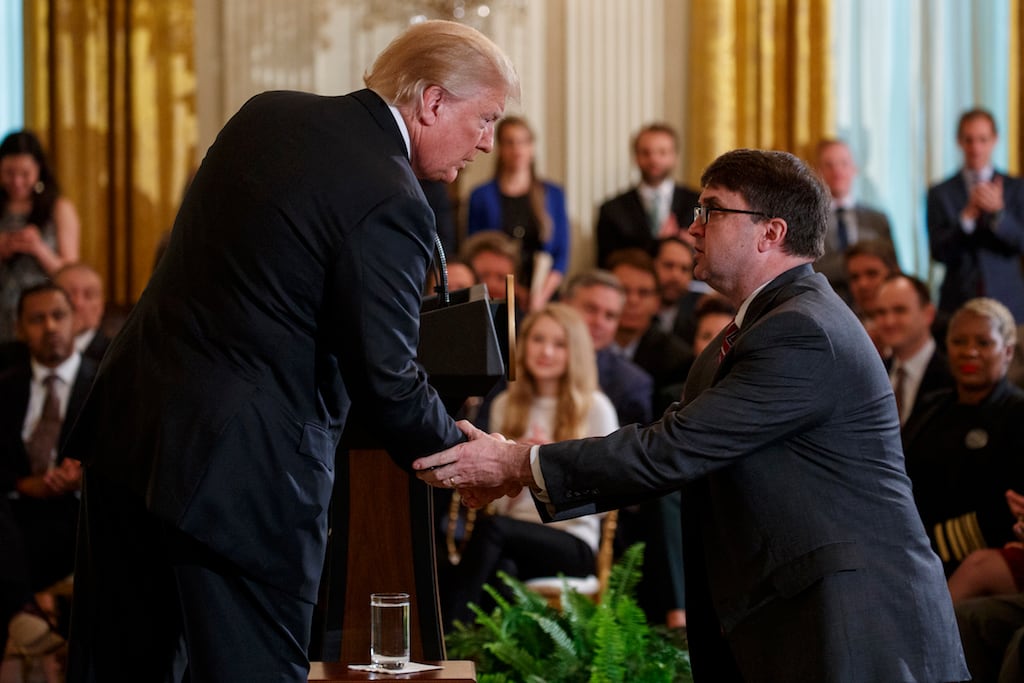WASHINGTON — In a White House press conference Wednesday, amid a host of other topics, President Donald Trump stated that because of his leadership “our vets are doing better than they’ve ever done.”
Yet his critics contend that over the last eight months, the Department of Veterans Affairs has never been in more disarray, with a confusing series of leadership scandals and management overhauls further diminishing public faith in the institution.
They both may be right.
“It really is the tale of two VAs right now: It’s the best of times, it’s the worst of times,” said Melissa Bryant, chief policy officer for Iraq and Afghanistan Veterans of America.
“We’ve had major legislative victories years in the making. But a lot of what we have seen in 2018 has been political theater, unfortunately.”
This Veterans Day, VA leaders once again find themselves at a critical moment for the department. Trump just signed into law the largest VA budget ever, topping $200 billion. Congress has given him nearly every major piece of legislation on veterans policy he has requested, including new rules that make it easier to fire poorly performing VA workers and reforms that aim to speed up the benefits claims process.
But as deadlines loom for implementing numerous health care and management initiatives, Democrats in the House are already preparing new scrutiny over how policy decisions are being made inside VA and what unplanned side effects those changes will have.
It’s a stark change from a year ago, when VA was arguably the most stable and successful part of Trump’s Cabinet.
On Veterans Day 2017, at Arlington National Cemetery in Virginia, then VA Secretary David Shulkin lauded the president for “strengthening our ability to provide high quality care and benefits while also improving outcomes for veterans.” Trump in a separate event lauded Shulkin for “doing an amazing job” caring for America’s former military members.
Within five months, Shulkin was fired.
RELATED

Ongoing leadership woes
Shulkin’s dismissal in March set off months of leadership confusion at VA. The former secretary to this day insists he was fired because of his opposition to plans to privatize portions of VA health care that were advanced by political operatives in the Trump administration. The White House has said Shulkin resigned after the president lost faith in his leadership.
The day Shulkin’s departure was announced — on Twitter, by the president, with little advance warning to the secretary — Trump also announced his pick to replace him: White House physician Rear Adm. Ronny Jackson. The Navy officer had never worked in the department before, and his lack of experience raised concerns among veterans advocates.
Within a month, Jackson was also gone. Reports of unprofessional behavior at the White House medical office (including drinking, improper medication distribution and hostile management practices) forced him to withdraw his name from consideration.
It took Trump four months to get his next full-time VA secretary in place. During that span, key decisions on electronic medical records systems and VA health care programs were met with legal challenges asserting that Trump’s interim appointments were in violation of federal law.
When VA Secretary Robert Wilkie — a career bureaucrat with experience on Capitol Hill and at the Pentagon — was confirmed, he promised to bring stable and calm leadership to the department.
But just a few weeks after he began work, a ProPublica report detailed how three of Trump’s business associates (all members of his exclusive Mar-a-Lago country club) were influencing a host of department plans and policies without any public scrutiny.
In the last few months, Wilkie has worked to dismiss assertions that his leadership is already undermined by the same officials who sparred with Shulkin and those outside influences. At a Senate Armed Services Committee hearing in September, Wilkie described the department as “calm” now. He promised lawmakers he is “the sole person” leading VA.
Democratic lawmakers remain unconvinced. They’ve asked — unsuccessfully — for more information on potential outside influencers.
Meanwhile, veterans groups thus far have reported little interaction with the new secretary, a break in typical protocols for the department’s top official. While Wilkie has made numerous appearances on the topic of homelessness and drug abuse prevention in recent weeks, the new secretary maintains a significantly lower profile than Shulkin.
RELATED

Privatization or choice?
Amid the leadership turmoil, lawmakers on Capitol Hill have continued to churn out a host of major bills related to veterans policy, including this summer’s VA Mission Act. The measure has the potential not only to define Trump’s legacy regarding veterans but also radically reshape the department for years to come.
Among other sweeping changes, the Mission Act calls for an overhaul to VA’s community care programs, which allow veterans to get medical appointments with private-sector doctors at the federal government’s expense. Trump has repeatedly referred to it as giving veterans “choice” in their medical care.
Wilkie and other department leaders are now in a year-long process now of hammering out the details for who will be eligible for the outside care, how much involvement in those decisions VA doctors will have, and how the pay structures will work.
“The hardest question at the heart of the Mission Act is how much should the private sector do for VA?” said Phil Carter, a senior policy researcher at the RAND Corporation who specializes in military and veterans issues. “That influences everything else.”
About one-third of all VA medical appointments today are already conducted by physicians outside the department’s system. Supporters of further increasing outside care options argue veterans shouldn’t have to wait in VA lines for basic care they could receive in the private sector.
But critics, including federal unions, argue the that real goal of these moves is to siphon federal money into outside companies, providing less specialized care while crippling the existing VA hospitals’ ability to meet veterans’ needs. They’ve labeled many of Trump’s proposals as a “privatization” of the department’s mission.
Wilkie, in his confirmation hearing this summer, said he wholeheartedly opposes privatizing VA services, but left ambiguity in that definition.
“If we believe that the veteran is central, we can also make the argument that as long as VA is at the central node in his care, and that that veteran has a day-to-day experience with the VA … that reinforces the future of VA,” he told senators. “That’s what I believe in.”
The debate over where to draw those lines was already contentious before the midterm elections. Now, with Democrats set to take over the House Veterans’ Affairs Committee agenda, the issue of private-sector care is likely to dominate much of the conversation in months to come.
In September, Rep. Mark Takano, D-Calif. and the leading candidate to be chairman of the veterans committee in January, promised in a letter to colleagues to “make necessary reforms to the Veterans Health Administration … while rejecting conservatives’ calls to privatize health care.”
RELATED

Other fights ahead
That’s not the only Trump administration priority in the crosshairs.
Several lawmakers from both parties have expressed concerns over VA’s planned move to a shared electronic health record with the Department of Defense, hailed by Trump and Shulkin as a game-changer for veterans care.
If successful, the multi-year project would more easily allow veteran patients to access and share their medical history, from the first day they enlist to their geriatric appointments. But while praising the idea, lawmakers have questioned whether the effort is properly funded and managed.
The same goes for VA staffing. Trump has promised to bring in more doctors and oust staffers who are performing poorly. Democrats have charged that Trump’s VA has instead used accountability legislation from 2017 to fire low-level employees without filling other much-needed positions.
“Everything is in the air right now,” said Joe Chenelly, national executive director at AMVETS. “We don’t know what the Mission Act will look like. We don’t know how health records are going to be. We don’t know about these budget cuts that Trump has talked about for federal departments.
“There are just a ton of questions unanswered.”
Trump’s 2016 campaign pledge to start a new hotline for veterans complaints has earned some goodwill from the community, but individuals using the service have reported mixed results with getting answers on their problems.
His VA has received harsher reviews for its opposition to paying benefits to “blue water” veterans who served in Vietnam and claim toxic exposure to chemical defoliants. And in recent months, dissatisfaction has risen among student veterans as another round of benefits payouts issues has plagued the post-9/11 GI Bill system.
In the September 2018 Military Times poll of active-duty troops, more than 40 percent said they had an unfavorable view of VA. Only 20 percent described their feelings as favorable.
Wilkie has acknowledged that along with his policy priorities, rebuilding public trust in the institution is a critical part of his work ahead.
“The state of VA is better,” he told senators at the September hearing. “I didn’t say good or excellent. It is better. And I do think we’re headed in the right direction.”
Leo covers Congress, Veterans Affairs and the White House for Military Times. He has covered Washington, D.C. since 2004, focusing on military personnel and veterans policies. His work has earned numerous honors, including a 2009 Polk award, a 2010 National Headliner Award, the IAVA Leadership in Journalism award and the VFW News Media award.



